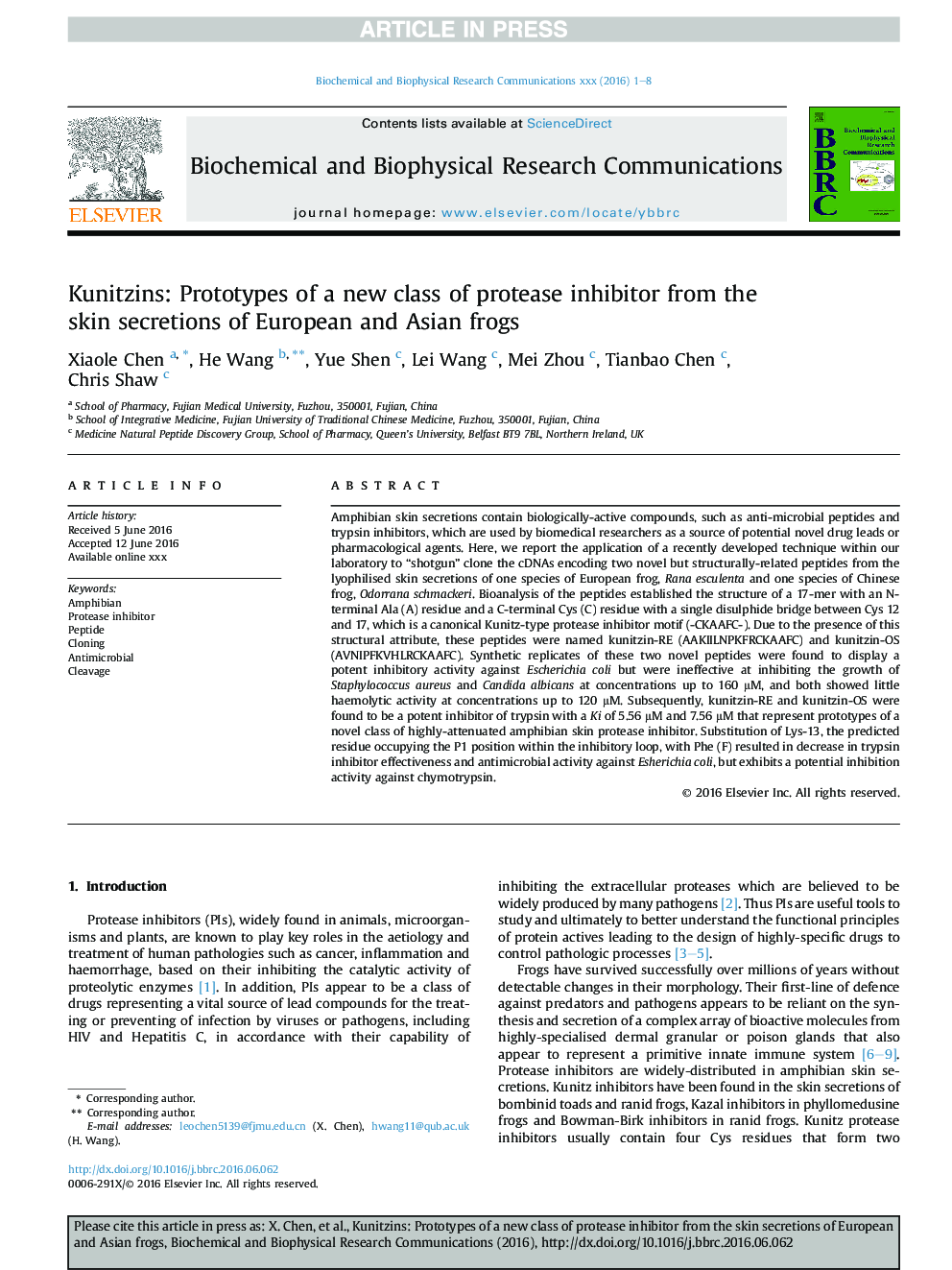| کد مقاله | کد نشریه | سال انتشار | مقاله انگلیسی | نسخه تمام متن |
|---|---|---|---|---|
| 10748097 | 1050259 | 2016 | 8 صفحه PDF | دانلود رایگان |
عنوان انگلیسی مقاله ISI
Kunitzins: Prototypes of a new class of protease inhibitor from the skin secretions of European and Asian frogs
دانلود مقاله + سفارش ترجمه
دانلود مقاله ISI انگلیسی
رایگان برای ایرانیان
کلمات کلیدی
موضوعات مرتبط
علوم زیستی و بیوفناوری
بیوشیمی، ژنتیک و زیست شناسی مولکولی
زیست شیمی
پیش نمایش صفحه اول مقاله

چکیده انگلیسی
Amphibian skin secretions contain biologically-active compounds, such as anti-microbial peptides and trypsin inhibitors, which are used by biomedical researchers as a source of potential novel drug leads or pharmacological agents. Here, we report the application of a recently developed technique within our laboratory to “shotgun” clone the cDNAs encoding two novel but structurally-related peptides from the lyophilised skin secretions of one species of European frog, Rana esculenta and one species of Chinese frog, Odorrana schmackeri. Bioanalysis of the peptides established the structure of a 17-mer with an N-terminal Ala (A) residue and a C-terminal Cys (C) residue with a single disulphide bridge between Cys 12 and 17, which is a canonical Kunitz-type protease inhibitor motif (-CKAAFC-). Due to the presence of this structural attribute, these peptides were named kunitzin-RE (AAKIILNPKFRCKAAFC) and kunitzin-OS (AVNIPFKVHLRCKAAFC). Synthetic replicates of these two novel peptides were found to display a potent inhibitory activity against Escherichia coli but were ineffective at inhibiting the growth of Staphylococcus aureus and Candida albicans at concentrations up to 160 μM, and both showed little haemolytic activity at concentrations up to 120 μM. Subsequently, kunitzin-RE and kunitzin-OS were found to be a potent inhibitor of trypsin with a Ki of 5.56 μM and 7.56 μM that represent prototypes of a novel class of highly-attenuated amphibian skin protease inhibitor. Substitution of Lys-13, the predicted residue occupying the P1 position within the inhibitory loop, with Phe (F) resulted in decrease in trypsin inhibitor effectiveness and antimicrobial activity against Esherichia coli, but exhibits a potential inhibition activity against chymotrypsin.
ناشر
Database: Elsevier - ScienceDirect (ساینس دایرکت)
Journal: Biochemical and Biophysical Research Communications - Volume 477, Issue 2, 19 August 2016, Pages 302-309
Journal: Biochemical and Biophysical Research Communications - Volume 477, Issue 2, 19 August 2016, Pages 302-309
نویسندگان
Xiaole Chen, He Wang, Yue Shen, Lei Wang, Mei Zhou, Tianbao Chen, Chris Shaw,